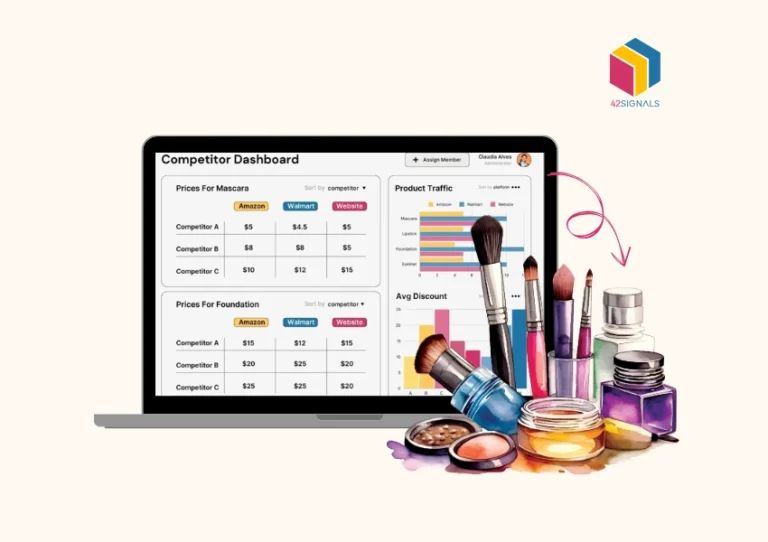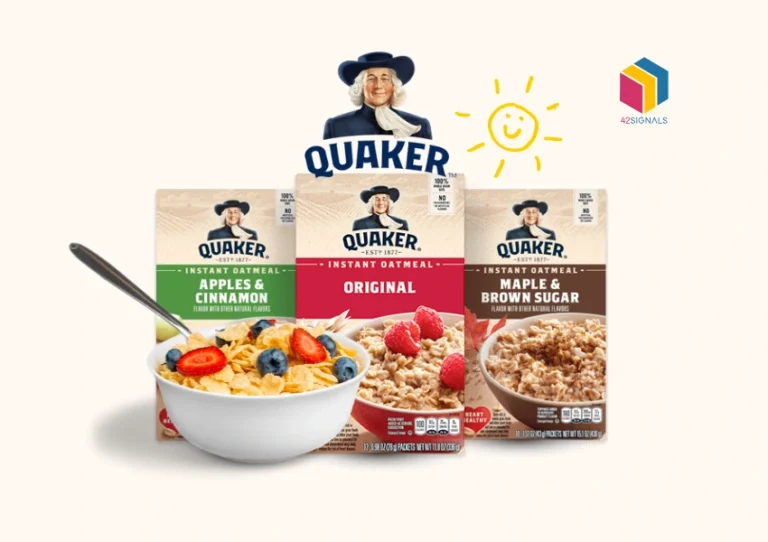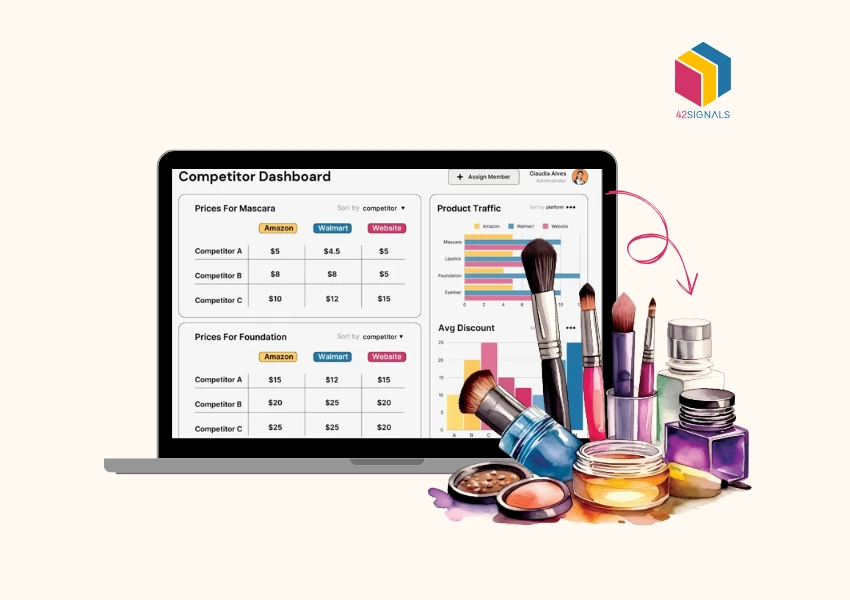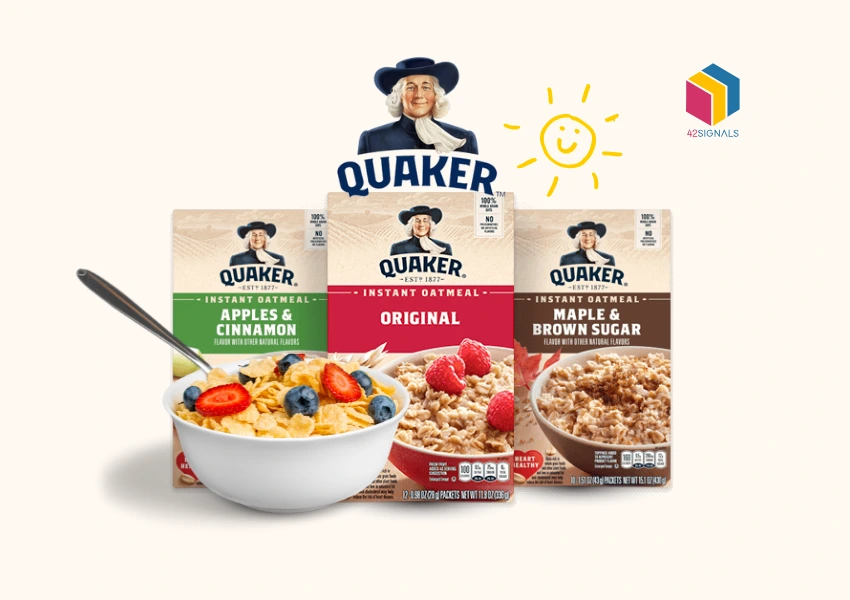Consider two smartphone manufacturers vying for supremacy. The first, pours resources into research and development, continuously refining its products. On the flip side, its competitor lags behind, sticking to the tried-and-true methods without venturing into the unknown. Unsurprisingly, the first captures a lion’s share of the market while the second grapples with diminishing returns. This encapsulates the essence of today’s cutthroat business landscape: product development and innovation are pillars of success. Remaining stagnant jeopardizes one’s market standing. To stay ahead, companies must embrace a powerful approach: competitor benchmarking. This involves dissecting competitors’ strengths and weaknesses, a process we’ll embark upon in this article. We will explore how organizations can use competitor benchmarking to improve their product development and drive innovation.
Competitor Benchmarking: Understanding the Landscape

Image Source: Company Sights
Before diving into competitor benchmarking, it’s important to gain a comprehensive understanding of the competitive landscape in your industry. This involves identifying both direct and indirect competitors, understanding their strengths and weaknesses, and recognizing potential opportunities and threats they present.
Understanding the competitive landscape can be achieved through market research, industry reports, and by closely monitoring industry trends and developments. This information will provide crucial context when it comes to conducting competitor benchmarking and making strategic decisions for product development.
By recognizing the broader market dynamics, you can also anticipate shifts in consumer demand or technological advancements. For instance, trends like sustainability, personalization, or artificial intelligence may signal key areas for innovation. This broader understanding allows you to position your company not just as a follower but as a leader in the industry.
Identifying Key Competitors
Once you have a clear understanding of the competitive landscape, the next step is to identify the key competitors that you want to benchmark against. These are the companies that are posing the greatest threat or competition within your industry. However, this process involves more than just listing prominent names.
Direct and Indirect Competitors
Direct competitors are those offering similar products or services to the same target audience. Indirect competitors may not serve the exact market but could impact customer preferences or disrupt traditional market practices. For example, a luxury car manufacturer may view electric vehicle startups as indirect competitors due to shifting consumer priorities toward sustainability and innovation.
Emerging Players
In addition to established competitors, consider emerging startups that may not yet hold significant market share but have disruptive potential. These companies often bring fresh ideas and innovative approaches that can quickly reshape the industry landscape. Paying attention to these players early on can offer a competitive advantage.
Start by conducting a thorough competitor analysis, examining each competitor’s products, market share, customer base, and unique selling propositions (USPs). Look for companies that are similar in size, target market, and product offerings to gain more meaningful insights. Additionally, use tools such as competitive analysis frameworks or software like SEMrush, SpyFu, or SimilarWeb to gather detailed information about competitors’ online presence and strategies.
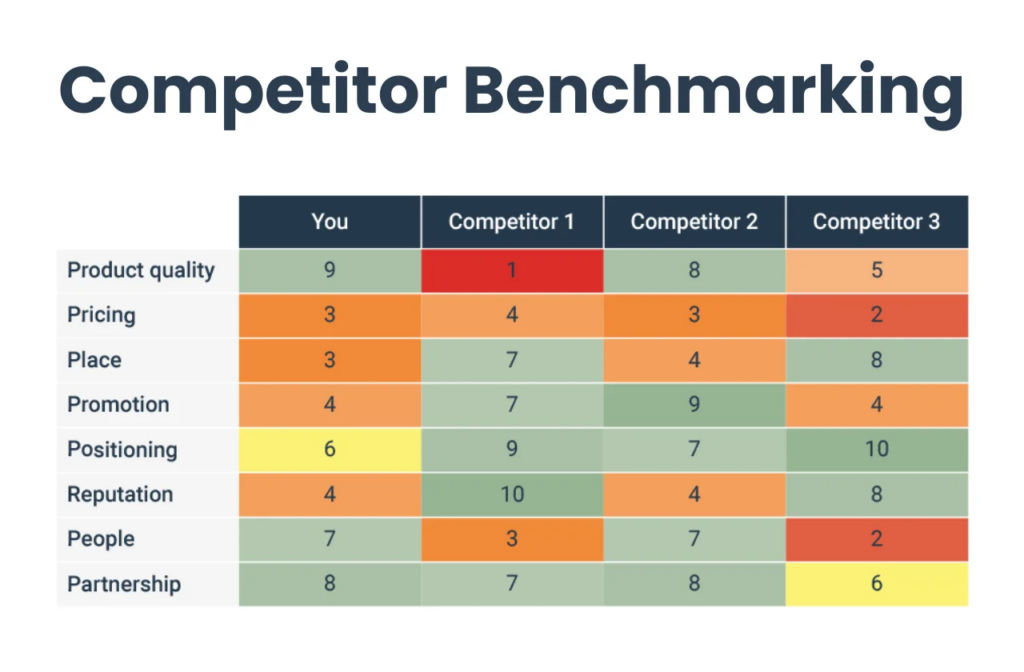
Image Source: Blitzllama
Start by conducting a thorough competitor analysis of each competitor’s products, market share, customer base, and unique selling propositions. Look for companies that are similar in size, target market, and product offerings to gain more meaningful insights. It’s also important to consider both established players and emerging startups that might disrupt the industry.
Analyzing Competitor Strategies
With a list of key competitors in hand, it’s time to dive deeper and analyze their strategies. This involves examining their marketing and positioning strategies, pricing strategies, distribution channels, and overall business model.

Marketing and Brand Positioning for Competitor Benchmarking
Focus on how competitors convey their brand’s value and differentiate themselves in the market. Are they leveraging emotional connections, innovative designs, or superior customer experiences? By identifying their branding tactics, you can find ways to either emulate successful strategies or carve out a unique positioning for your brand.
Pricing and Distribution
Competitors’ pricing models can also reveal valuable insights. Do they emphasize premium pricing with added value or pursue aggressive pricing strategies to undercut rivals? Additionally, consider their distribution channels. Are they excelling in direct-to-consumer (D2C) models, relying on third-party retailers, or using a hybrid approach? Understanding these decisions can help refine your go-to-market strategy.
Innovation Patterns During Competitor Benchmarking
Analyze patterns in their product launches, updates, or campaigns. For example, do they frequently release iterative updates or focus on groundbreaking innovations? Such observations can highlight the pace at which competitors operate and provide clues about consumer expectations.
Evaluating Product Features and Innovations
One of the most crucial aspects of competitor benchmarking is evaluating their product features and innovations. By analyzing what your competitors are offering, you can identify areas where your own products may be falling short or where you can differentiate yourself.
Examine the features, functionalities, and design aesthetics of your competitor’s products. Look for user feedback and reviews to understand how customers perceive and interact with these products. This analysis will provide valuable insights into customer preferences and expectations and can inform your own product development decisions.
Implementing Lessons Learned for Successful Product Development

Once you have gathered the necessary insights from competitor benchmarking, it’s time to implement the lessons learned into your own product development process.
Start by identifying the gaps and opportunities in your product offerings based on the analysis of competitor strategies and product features. Prioritize the areas that require improvement or differentiation, and develop a roadmap for implementing changes in your product development plans.
Collaborate with your internal teams, including product managers, engineers, designers, and marketers, to align on the new direction and prioritize the necessary changes. Additionally, gather feedback from customers and potential users to validate your plans and ensure that the proposed improvements align with their needs and expectations.
Iterate and refine your product development process continuously based on the feedback and insights gained from benchmarking your competitors. This ongoing improvement framework will enable you to stay ahead of the competition and consistently deliver innovative products that meet customer demand.
Conclusion on Competitor Benchmarking
In conclusion, competitor benchmarking is a valuable strategy for improving product development and driving innovation. It allows you to gain insights into the competitive landscape, identify key competitors, analyze their strategies, evaluate their product features, and implement lessons learned for successful product development.
By understanding what your competitors do well and where they struggle, you can enhance your business by improving your products. Consistently making your products better using insights from your competitors can bring more joy to your customers and lead to ongoing business growth.


